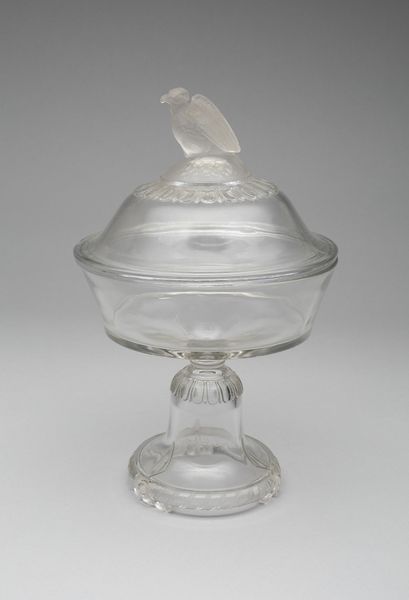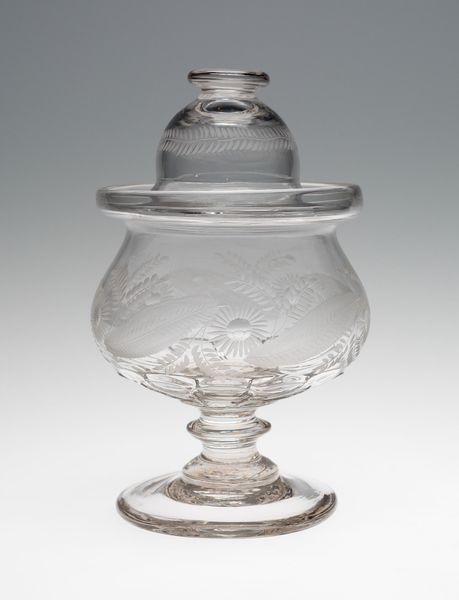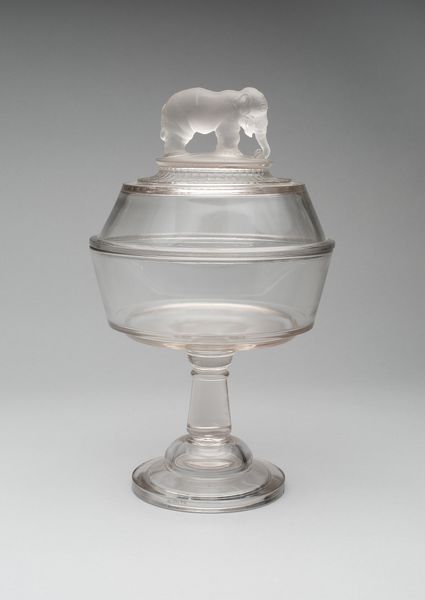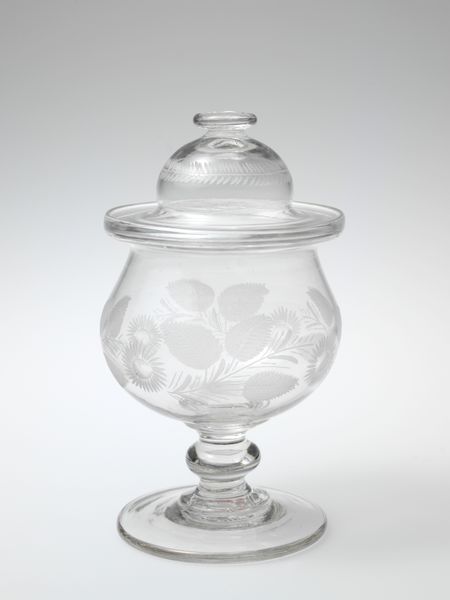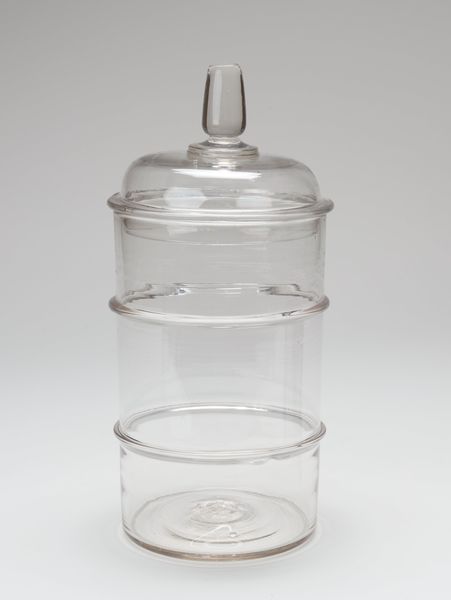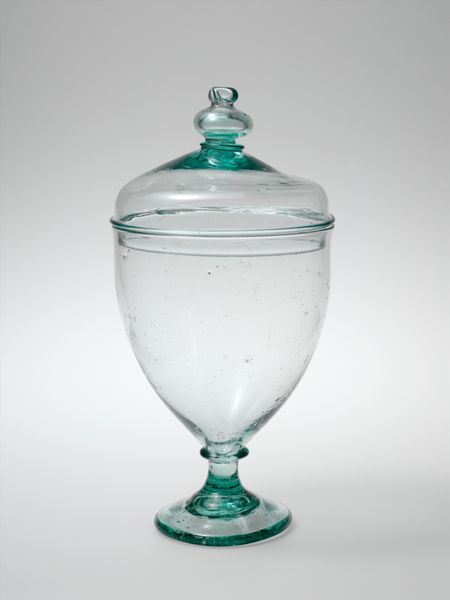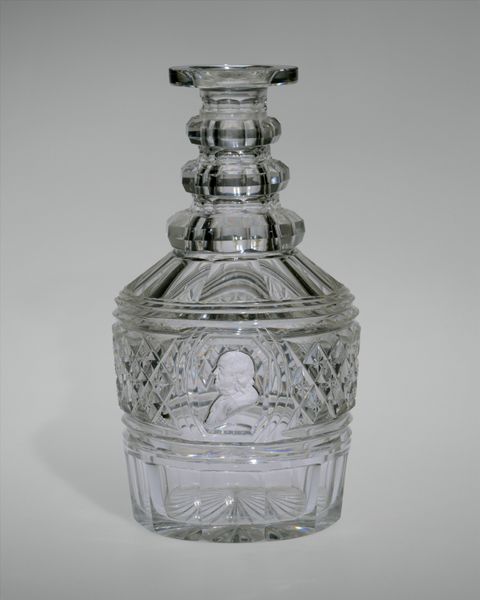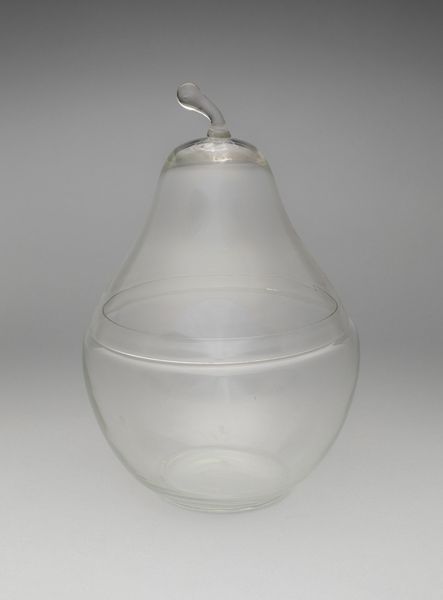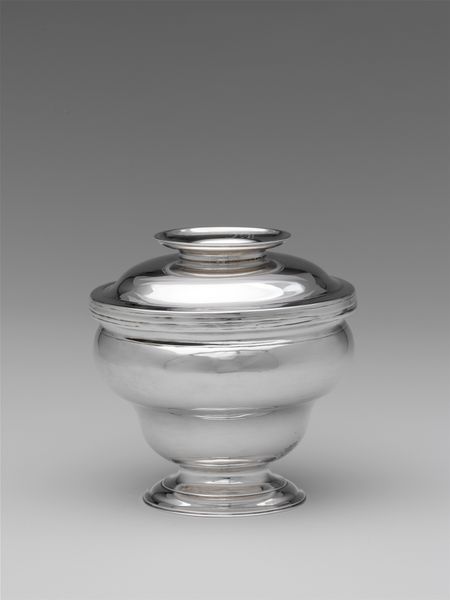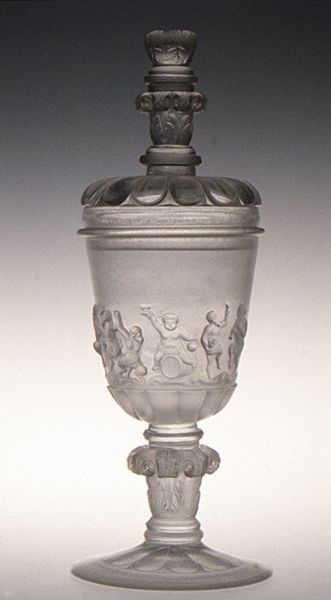
glass
#
baroque
#
glass
#
decorative-art
Copyright: Public Domain
Editor: Here we have an 18th or 19th century glass compote, or sugar bowl, by an anonymous maker. It’s so simple, almost austere, yet that clarity gives it an incredible presence. How should we understand this object? Curator: What strikes me is the transparency, how the piece embodies a certain striving for clarity, both literal and metaphorical. In that period, what did sugar represent to society? Editor: Wealth, I imagine. Sugar was still pretty expensive. A luxury. Curator: Exactly. And the bowl then becomes more than just a container; it's a display of prosperity. The transparency almost demands honesty, or at least, a pretense of it. Do you see any repeated motifs? Editor: The scalloped edge around the base. Those teardrop shapes could almost be interpreted as stylized flower petals. Curator: Think about the historical connotations of the flower. The floriated symbol in this context can carry emotional and even psychological implications – a hint of innocence or even fragility juxtaposed against the bowl's utility. Editor: So, it’s not just about function, but about aspiration. The symbolism elevates everyday objects to carry complex societal messages. Curator: Precisely. Consider this within the broader decorative arts movement; a movement steeped in conveying complex cultural values through visual encoding. Editor: I never thought I could read so much from a simple sugar bowl. It's like peering into another world! Curator: And those echoes of meaning are exactly what keeps these artifacts relevant through time.
Comments
No comments
Be the first to comment and join the conversation on the ultimate creative platform.




